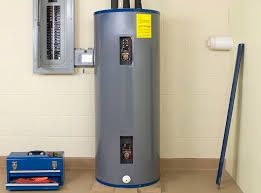This post following next about What Kind of Maintenance Do Water Heaters Need? is unquestionably compelling. You should look it over.

Warm water is vital for everyday convenience, whether it's for a rejuvenating shower or washing recipes. To ensure your hot water system runs successfully and lasts longer, regular maintenance is vital. This post offers practical pointers and understandings on how to maintain your home's warm water system to prevent disruptions and expensive repair work.
Intro
Maintaining your home's warm water system could seem daunting, however with a few basic steps, you can ensure it runs efficiently for many years ahead. This guide covers every little thing from comprehending your warm water system to DIY maintenance ideas and knowing when to employ professional assistance.
Importance of Preserving Your Warm Water System
Normal maintenance not only expands the lifespan of your hot water system yet also ensures it operates successfully. Neglecting maintenance can bring about decreased effectiveness, greater power costs, and even premature failing of the system.
Indicators Your Hot Water System Requirements Upkeep
Knowing when your warm water system needs focus can avoid significant issues. Watch out for indications such as irregular water temperature level, strange noises from the heating unit, or corroded water.
Comprehending Your Hot Water System
Prior to diving right into maintenance tasks, it's helpful to recognize the basic elements of your hot water system. Normally, this includes the water heater itself, pipelines, anode rods, and temperature level controls.
Month-to-month Maintenance Tasks
Routine month-to-month checks can aid catch minor problems before they rise.
Purging the Water Heater
Flushing your water heater eliminates sediment accumulation, enhancing efficiency and prolonging its life.
Checking and Replacing Anode Rods
Anode rods avoid rust inside the storage tank. Checking and changing them when broken is crucial.
Examining and Changing Temperature Settings
Adjusting the temperature settings ensures optimal performance and safety.
Do It Yourself Tips for Upkeep
You can perform a number of maintenance tasks on your own to maintain your warm water system in top problem.
Looking for Leaks
Frequently examine pipes and connections for leaks, as these can lead to water damages and higher bills.
Examining Stress Alleviation Valves
Evaluating the pressure safety valve ensures it functions appropriately and protects against extreme pressure buildup.
Shielding Pipes
Shielding warm water pipes reduces warmth loss and can save energy.
When to Call a Specialist
While DIY upkeep is helpful, some problems require specialist know-how.
Complicated Issues Needing Professional Help
Instances include major leakages, electrical issues, or if your water heater is continually underperforming.
Regular Specialist Upkeep Perks
Professional maintenance can include complete assessments, tune-ups, and making certain conformity with security standards.
Final thought
Regular maintenance of your home's warm water system is vital for performance, long life, and expense financial savings. By adhering to these suggestions and knowing when to look for specialist assistance, you can guarantee a reliable supply of hot water without unanticipated disruptions.
How to Maintain an Instant Hot Water Heater
Before tinkering with your hot water heater, make sure that it’s not powered on. You also have to turn off the main circuit breaker and shut off the main gas line to prevent accidents. Also turn off the water valves connected to your unit to prevent water from flowing into and out of the appliance. 2. When you’re done, you have to detach the purge valves’ caps. These look like the letter “T†and are situated on either side of the water valves. Doing so will release any pressure that has accumulated inside the valves while at the same time avoid hot water from shooting out and burning your skin. 3. When the purge valves’ caps are removed, you have to connect your hosing lines to the valves. Your unit should have come with three hoses but if it didn’t, you can purchase these things from any hardware or home repair shops. You can also get them from retail stores that sell water heating systems. Read the user’s manual and follow it to complete this task properly. When the hosing lines are connected, open the purge port’s valves. 4. You should never use harsh chemical cleaners or solutions when cleaning your unit. Make use of white vinegar instead. It should be undiluted and you’ll probably use about 2 gallons. 5. Now flush your water heater. This task should probably take about 40 minutes. We can’t give you specific directions for this because the procedure is carried out depending on the type, model and brand of your heater. With that being said, refer to the user’s manual. 6. When you’re done draining the unit, you have to turn off the purge port valves again. Remove the hosing lines that you earlier installed on each of the water valves. Put the valve caps (purge port) back in their respective places and be very careful so as not to damage the rubber discs that are found inside these caps. 7. Now that everything’s back in place, check your user’s manual again to find out how to reactivate your water heating system. 8. Once it is working, turn one of your hot water faucets on just to let air pass through the heater’s water supply pipes. Leave the tap on until water flows smoothly out of it. https://www.orrplumbing.com/blog/2014/september/how-to-maintain-an-instant-hot-water-heater/

I stumbled upon that content about Tips on Maintaining a Water Heater while scouting around the internet. Enjoyed our blog posting? Please quickly share it. Let others locate it. Many thanks for your time spent reading it.
Book An Estimate Now